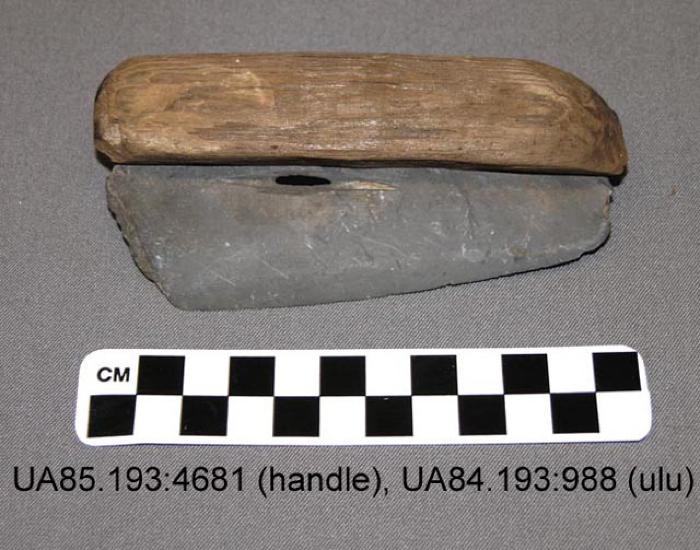Ulu — Ulukaq
Ulukaq aturluku. – Use the ulu.

Photo: Slate ulu with wooden handle. Karluk One Site, Koniag, Inc. Collection.
Commonly known as the Eskimo woman’s knife, the ulu is an item of technology shared by coastal peoples from Alaska to Greenland. Ground from a thin leaf of slate, the traditional Alutiiq ulu has a broad, convex blade with a beveled cutting edge, well designed for splitting fish. The slate blade was hafted to a wooden handle with the aid of baleen or spruce root lashing tied through a small, drilled hole. Some handles had finger grips. Others were decorated with animal carvings.
Alutiiq people once manufactured ulus in a variety of sizes and shapes to accommodate specific cutting and scraping tasks. Ulus were important for gutting, beheading, and filleting salmon, which were processed in large quantities for winter food, and they were used in household cooking and sewing tasks.
Slate ulus first appear in Kodiak’s archaeological record about 3,500 years ago and coincide with the appearance of abundant stone net sinkers, an artifact that indicates the development of net fishing. They may have been preceded by knives with small oval flaked stone blades. Archaeologists believe that slate knives were more efficient than chipped stone tools at processing the larger quantities of fish captured with nets. The ulu has a longer cutting edge and can be rapidly resharpened with little damage to the tool. Ulus are still used for a variety of butchering tasks, although the slate knives of antiquity have been replaced with stainless steel blades.
